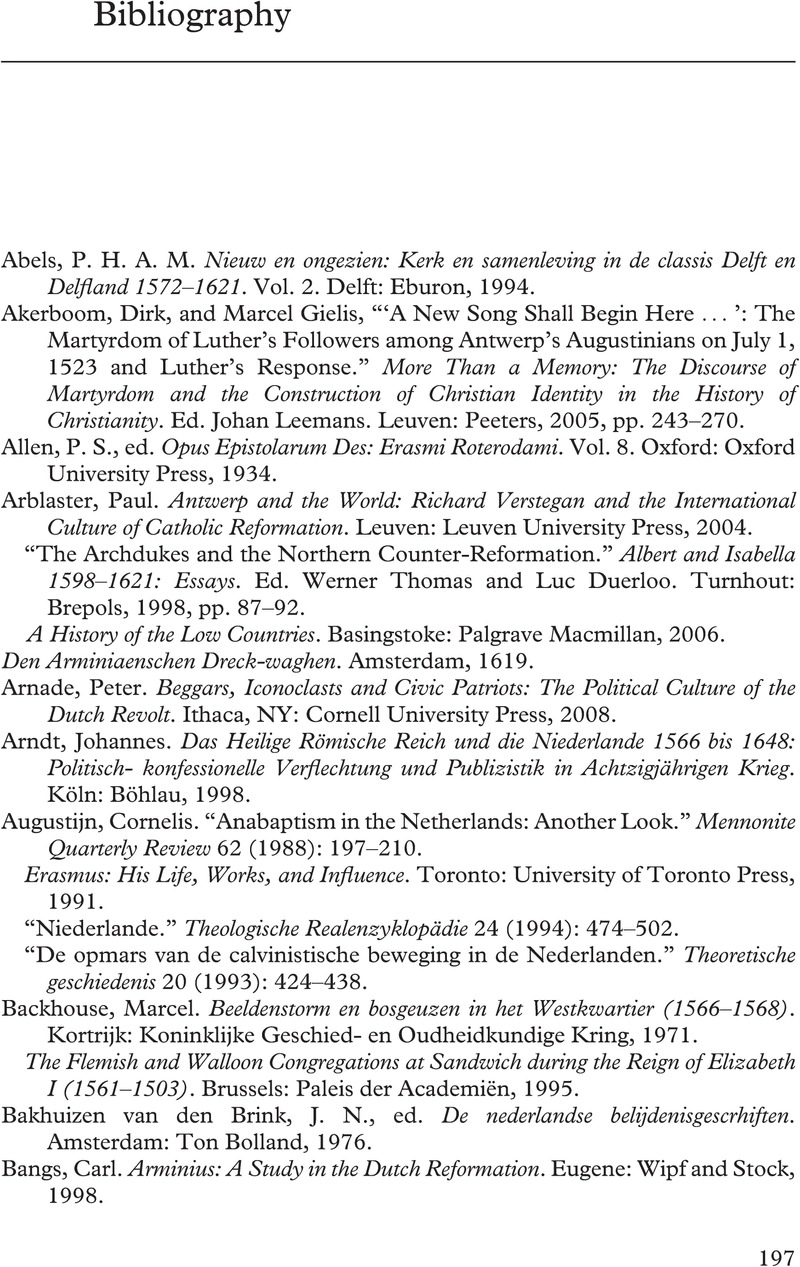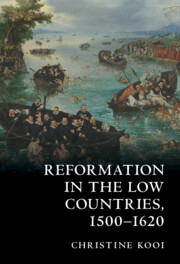Book contents
- Reformation in the Low Countries, 1500–1620
- Reformation in the Low Countries, 1500–1620
- Copyright page
- Dedication
- Contents
- Illustrations
- Maps
- Acknowledgments
- A Note on Nomenclature
- Abbreviations
- Introduction
- 1 The Netherlands in the Early Sixteenth Century
- 2 Inchoate Reformation
- 3 The Confessional Turn
- 4 War
- 5 Schism
- Conclusion
- Bibliography
- Index
- References
Bibliography
Published online by Cambridge University Press: 02 June 2022
- Reformation in the Low Countries, 1500–1620
- Reformation in the Low Countries, 1500–1620
- Copyright page
- Dedication
- Contents
- Illustrations
- Maps
- Acknowledgments
- A Note on Nomenclature
- Abbreviations
- Introduction
- 1 The Netherlands in the Early Sixteenth Century
- 2 Inchoate Reformation
- 3 The Confessional Turn
- 4 War
- 5 Schism
- Conclusion
- Bibliography
- Index
- References
Summary

- Type
- Chapter
- Information
- Reformation in the Low Countries, 1500-1620 , pp. 197 - 216Publisher: Cambridge University PressPrint publication year: 2022



